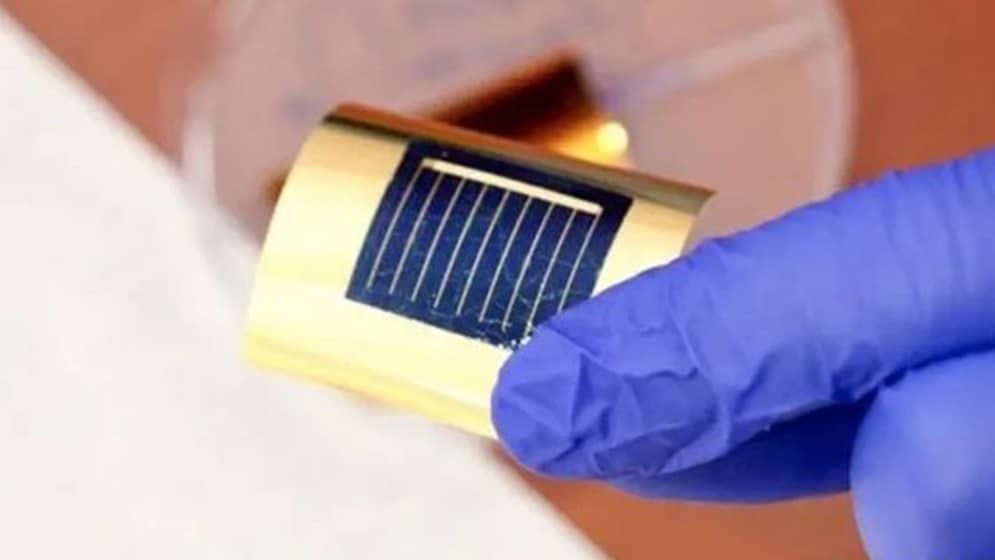- Curved Lithium Polymer battery
- Fast Charge Polymer Battery
- Flexible Polymer Lithium Battery
- Ultra-thin Polymer Battery
/ Blog / Battery Knowledge /
Turkish scientists have developed solar flexible battery
15 Oct, 2021
By hoppt

Scientists at the Eskisehir Technical University (ESTU) Faculty of Science use silicon instead of gallium arsenide to produce solar cells, which are used to power satellites, aerospace vehicles, and military vehicles. This reduces costs and contributes to localization.
Associate Professor Mustafa Kulakci of the Faculty and Staff Association and Professor Uğur Serin can, Ph.D., received the TÜBİTAK 1003 2018 Leading Field R&D Project Support Program titled "Using Silicon Supported by the project of "Growth, Manufacturing, and Characterization of High-Efficiency Flexible Thin Film Gallium Arsenide Solar Cells of Yashi."
After about three years of work, Turkish scientists have developed III-V flexible thin-film solar cells on silicon substrates. The cells are usually produced on gallium arsenide substrates (substrates). Their goal is to use them in ESTU nanoscale Projects designed locally by the research laboratory to contribute to the National Space Program.
With the support of the Ministry of Industry and Technology, the Turkish Patent and Trademark Office, the International Federation of Inventors'Inventors' Associations (IFIA), the World Intellectual Property Organization (WIPO), the European Patent Office (EPO), and the Turkish Technical Team Foundation, Kulak obtained the patent. Qihe Serinjiang won the gold medal at the 6th Istanbul International Invention Exhibition ISIF'21ISIF'21, held in Turkey last month.
The project coordinator, Professor Mustafa Kulakchi, Ph.D., Lecturer and Associate Professor in the Department of Physics, said that although the gallium arsenide substrate III-V flexible solar cells are used in satellites, aerospace vehicles, and military vehicles are expensive, Still being used.
Kulakchi provided information about the project he created with Dr. Salinjang:
"In the production of flexible solar cells, we did not use expensive gallium arsenide, but silicon, which is very cheap and has more advanced substrate technology. Compared with silicone, costly is costly material. As part of the project, the performance of the flexible thin solar cell we produced by removing it from silicon is almost equivalent to that of the solar cell we removed from the gallium arsenide base. We believe that through the research we conducted, we are III The action in -V photovoltaic technology has opened up a new cost-effective channel. GaAs-based thin-film flexion critically is a critical technology in the future. According to the difference in battery technology, III-V solar cells are about 85 -90% of the production cost comes from the substrate."
"It is light and flexible and can be opened and folded like a roll."
Kulakchi said that gallium arsenide (GaAs)-based batteries are costly in solar cell applications on the earth, and very low-cost silicon cells are used in earth applications.
Karachi explained that they used low-cost silicon to produce gallium-arsenide flexible thin-film solar cells for satellite, space, aviation, and military technology systems projects.
"The cost between the two substrates varies by size but can range from 10 times to hundreds of times. Gallium resources are minimal. Photovoltaic (solar panels and battery power generation) industry, optoelectronics (study of light energy and electrical energy) The scientific branch of the transformation) industry and the telecommunications industry must share the limited resources of GaAs. So its price is high. We produced this battery technology, which is very useful for solving this vicious circle from much cheaper silicon. The method is critical. We have paved the way for the production of expensive technology at a lower price.
Group II-V flexible thin-film batteries have more functions than traditional batteries based on substrates. It is light and flexible and can be opened and folded like a roll. Due to its thinness, its temperature and radiation tolerance are much higher than its substrate counterparts. The efficiency is also very high. This is the first time we have produced these flexible thin-film batteries on silicon, usually built on gallium arsenide substrates. Turkey'sTurkey's patent application process has been completed. We are about to obtain a foreign patent. ""
Kulakchi said that to take the project further, he will continue to improve the process.
"These are key technologies."
Professor Uğur Serin can, a Ph.D. in the project, mentioned the importance of the National Space Program to Turkish scientists and said that they could support these studies through their project.
He pointed out that energy is one of the essential values essentialSalinan said:
"It is very important to be able to produce III-V flexible battery with gallium arsenide substrates and at the same time reduce costs. These are key technologies because they have both civilian and military applications. When costs decrease and production increases, they are used in the civilian field. The application of these solar cells can also be expanded. Due to the high cost, they can also expand the application of these solar cells; they are used in satellite, aerospace or military fields. We pave the way for the cheap and large-scale production of these cells as well as domestic production Road. It'sIt's crucial to reduce costs while integandh existing silicon technology. We have achieved this key point through our project. We have another work on the project to continue. We hope to further improve our silicon The efficiency of the technology developed. This improves further for our coun.try."



